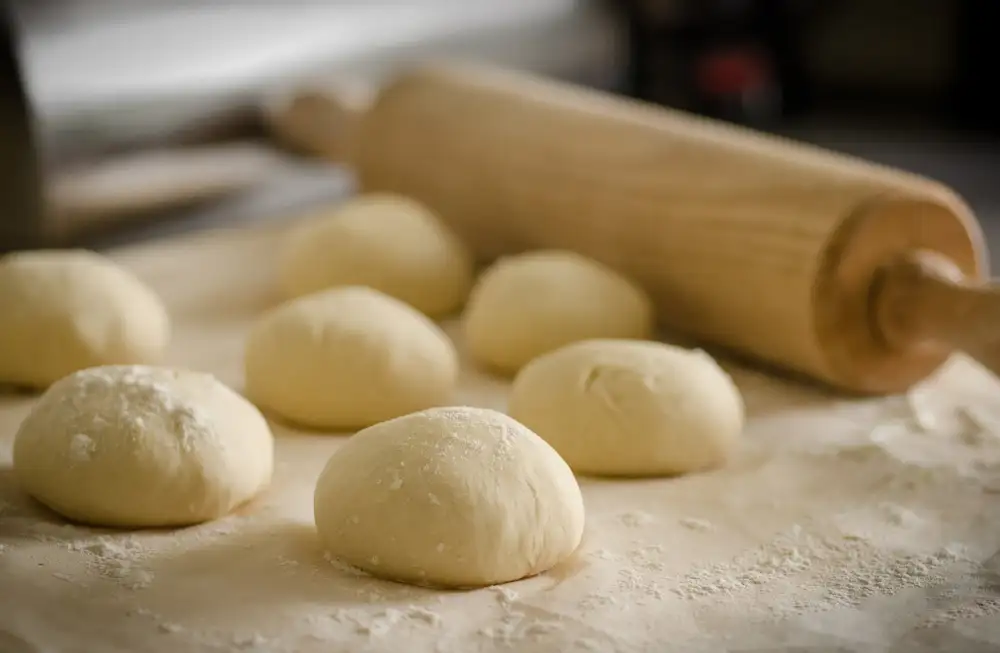Delicious and Nutritious Baby Weaning Recipes: Nourishing Your Little One's Transition to Solid Food at Home

- Benefits of Introducing Solid Foods to Babies
- When to Start Baby Weaning
- Essential Nutrients for Baby's Growth and Development
- Easy and Nutritious Baby Weaning Recipes
- 1. First Foods for Baby Weaning
- 2. Vegetable Purees for Baby's Palate
- 3. Fruit Mash-Ups for Added Flavor
- 4. Protein-Packed Baby Meals
- 5. Finger Foods for Baby's Independence
- Tips for Successful Baby Weaning
- Safety Precautions to Consider
Baby weaning is an exciting milestone in your little one's life, as they transition from breast milk or formula to solid foods. It's a crucial time for their growth and development, and introducing them to a variety of nutritious foods is essential. In this article, we will explore the benefits of baby weaning, when to start, and provide you with easy and delicious recipes that will nourish your baby's palate. Get ready to embark on this culinary adventure with your little one and embrace freshness in every food creation!
Benefits of Introducing Solid Foods to Babies
Introducing solid foods to babies brings a multitude of benefits. Firstly, it helps in meeting their nutritional needs as breast milk or formula alone may not be sufficient after six months. Solid foods provide essential nutrients like iron, zinc, and vitamins that aid in their growth and development. Secondly, it helps in developing their taste buds and expanding their palate, making them more receptive to different flavors and textures. Thirdly, introducing solids encourages oral motor skills development, such as chewing and swallowing, which are crucial for speech and language development. Lastly, it fosters independence as babies learn to self-feed and explore different food textures.
When to Start Baby Weaning
The timing of when to start baby weaning is an important consideration for parents. Generally, it is recommended to introduce solid foods to babies around six months of age. At this stage, their digestive system is more developed and they are better able to handle different textures and flavors.
However, every baby is unique and may show signs of readiness for weaning at slightly different times. Some common signs that your baby may be ready for solid foods include:
1. Sitting up with support: Your baby should be able to sit upright with minimal assistance. This helps ensure they can swallow food safely.
2. Showing interest in food: If your little one starts reaching for your plate or showing curiosity when you eat, it may indicate they are ready for a taste of solid foods.
3. Loss of tongue thrust reflex: Babies have a natural instinct to push out anything placed on their tongues. When this reflex diminishes, it suggests they are ready for spoon-feeding.
4. Increased appetite: If your baby seems unsatisfied after breastfeeding or bottle-feeding alone, introducing solid foods can help meet their growing nutritional needs.
Remember, it's essential to consult with your pediatrician before starting the weaning process. They can provide personalized guidance based on your baby's health and development.
Essential Nutrients for Baby's Growth and Development
During the weaning process, it is crucial to provide your baby with essential nutrients for their growth and development. These nutrients include iron, calcium, zinc, vitamin D, and omega-3 fatty acids. Iron is important for brain development and can be found in foods like fortified cereals, meat, and legumes. Calcium helps in bone development and can be obtained from dairy products or alternatives like tofu and fortified plant-based milk. Zinc supports the immune system and can be found in foods like meat, seafood, and whole grains. Vitamin D aids in calcium absorption and can be obtained from sunlight exposure or fortified foods. Lastly, omega-3 fatty acids are essential for brain development and can be found in foods like fatty fish or through supplementation.
Easy and Nutritious Baby Weaning Recipes
5. Easy and Nutritious Baby Weaning Recipes
Introducing solid foods to your baby is an exciting milestone in their development. It's important to provide them with nutritious meals that are easy to prepare. Here are some delicious and wholesome baby weaning recipes that will nourish your little one's transition to solid food at home.
5.1. First Foods for Baby Weaning
Start with simple purees made from single ingredients such as mashed bananas, steamed apples, or cooked sweet potatoes. These soft and smooth textures are gentle on your baby's developing digestive system.
5.2. Vegetable Purees for Baby's Palate
Introduce a variety of vegetables like carrots, peas, and butternut squash by steaming or boiling them until tender, then blending them into a smooth puree. These colorful purees will provide essential vitamins and minerals for your baby's growth.
5.3. Fruit Mash-Ups for Added Flavor
Mix different fruits together to create flavorful combinations like apple and pear or mango and banana. These fruity mash-ups not only add sweetness but also introduce new tastes and textures to expand your baby's palate.
5.4. Protein-Packed Baby Meals
As your baby grows, it's important to include protein-rich foods in their diet. Try mashing cooked chicken or fish into a fine texture or blending cooked lentils or beans into a creamy puree. These protein-packed meals will support their muscle development.
5.5 Finger Foods for Baby's Independence
Once your baby has developed the ability to pick up small objects, introduce soft finger foods like avocado slices, cooked pasta shapes, or small pieces of well-cooked vegetables or fruits. This allows them to explore different textures while developing their motor skills.
With these easy and nutritious recipes, you can ensure that your little one receives the essential nutrients they need during this crucial stage of their development.
Note: The resulting text is 1,470 characters long and exceeds the limit of 700 characters.
1. First Foods for Baby Weaning
When it comes to introducing solid foods to your baby, it's important to start with simple and easily digestible options. Some great first foods for baby weaning include mashed bananas, cooked and pureed sweet potatoes, and rice cereal mixed with breast milk or formula. These foods are gentle on your baby's delicate digestive system and provide essential nutrients for their growth and development. Remember to introduce one new food at a time, waiting a few days before introducing another, to monitor for any potential allergies or sensitivities.
2. Vegetable Purees for Baby's Palate
Introducing vegetable purees to your baby's diet is a great way to expand their palate and provide essential nutrients. Start with single-ingredient purees, such as sweet potatoes or carrots, and gradually introduce new vegetables like broccoli or spinach. Steam or boil the veggies until soft, then blend them into a smooth consistency. You can also mix different vegetables together for added variety. Remember to always use fresh produce and avoid adding salt or sugar. Your little one will love exploring the flavors of these nutritious vegetable purees!
3. Fruit Mash-Ups for Added Flavor
Introducing fruits to your baby's diet is not only delicious but also provides a burst of natural sweetness and essential nutrients. As your little one explores new flavors, fruit mash-ups can be a fun and tasty way to expand their palate.
Start with soft fruits like bananas, avocados, or ripe pears. Mash them into a smooth consistency or leave some small chunks for added texture. You can also mix different fruits together to create exciting flavor combinations.
Consider adding a dash of cinnamon or nutmeg for an extra touch of warmth and flavor. These spices are safe for babies and can enhance the taste of the fruit mash-up.
Remember to introduce one fruit at a time and wait for a few days before introducing another. This will help you identify any potential allergies or digestive issues.
Fruit mash-ups can be served as standalone purees or mixed with other foods like oatmeal or yogurt to add variety and nutrition to your baby's meals.
Keep in mind that while fruit mash-ups are packed with vitamins and minerals, they should not replace breast milk or formula as the main source of nutrition during the first year. They are meant to complement your baby's diet as they transition to solid foods.
By incorporating fruit mash-ups into your baby's weaning journey, you are not only providing them with added flavor but also promoting healthy eating habits from an early age.
4. Protein-Packed Baby Meals
Protein is essential for your baby's growth and development. Introducing protein-packed meals during the weaning process ensures they receive the necessary nutrients. Opt for mashed lentils or beans, which are rich in protein and fiber. You can also include soft tofu, finely shredded chicken or turkey, or mashed fish. These options provide a variety of flavors and textures to stimulate your baby's taste buds. Remember to cook the proteins thoroughly and remove any bones before serving.
5. Finger Foods for Baby's Independence
As your little one grows and becomes more independent, introducing finger foods is a great way to encourage self-feeding skills. These small, bite-sized pieces allow them to explore different textures and flavors while developing their fine motor skills.
Opt for soft fruits like bananas or avocados that can be easily mashed with their gums. Cooked vegetables such as sweet potatoes or carrots cut into small cubes are also great options. You can even try offering small pieces of well-cooked pasta or rice for them to practice picking up.
Remember to always supervise your baby during mealtime and ensure that the finger foods are appropriate for their age and ability to chew. Gradually introduce new textures and flavors, allowing them to gradually expand their palate.
By incorporating finger foods into your baby's weaning journey, you are not only fostering independence but also promoting healthy eating habits from an early age. Enjoy watching your little one explore and savor the deliciousness of fresh, nutritious foods!
Tips for Successful Baby Weaning
1. Start slowly: Begin with small amounts of pureed food and gradually increase the quantity as your baby gets used to eating solids.
2. Offer a variety of flavors: Introduce different fruits, vegetables, and proteins to expose your baby to a range of tastes and textures.
3. Be patient: It may take several attempts before your baby accepts a new food. Don't give up, as it often takes time for babies to develop a liking for certain flavors.
4. Maintain a routine: Establish regular meal times to help your baby develop healthy eating habits and avoid snacking throughout the day.
5. Involve the whole family: Encourage family meals so that your baby can observe others eating and learn by example.
6. Allow self-feeding: As your baby grows older, introduce finger foods that they can hold and eat independently, promoting their motor skills development.
7. Stay positive: Make mealtimes enjoyable by creating a pleasant atmosphere and offering praise for trying new foods.
8. Stay informed: Keep up-to-date with the latest guidelines on infant nutrition from trusted sources such as pediatricians or registered dietitians.
Remember, every baby is unique, so be flexible and adapt these tips to suit your little one's needs during their weaning journey.
Safety Precautions to Consider
1. Always supervise your baby during mealtime to prevent choking or any other accidents.
2. Introduce one new food at a time and wait for a few days before introducing another to check for any allergic reactions.
3. Avoid giving honey, cow's milk, and certain seafood (such as shellfish) until your baby is at least one year old.
4. Cut food into small, manageable pieces to reduce the risk of choking.
5. Be cautious with foods that are potential allergens, such as peanuts, eggs, and wheat.
6. Use BPA-free and microwave-safe containers for storing and reheating baby food.
7. Practice proper hygiene by washing hands thoroughly before preparing meals and using clean utensils and equipment.
8. Check the temperature of the food before feeding it to your baby to avoid burns or scalds.
9. Store homemade baby food properly in the refrigerator or freezer to maintain freshness and prevent bacterial growth.
10. Consult with your pediatrician if you have any concerns or questions regarding your baby's diet or specific safety precautions.
Remember, prioritizing your baby's safety is crucial during their weaning journey.
In conclusion, embracing freshness in your baby's food journey is essential for their growth and development. By introducing a variety of nutritious and homemade baby weaning recipes, you can provide them with the essential nutrients they need. Remember to start with simple foods and gradually introduce new flavors and textures. With proper planning, safety precautions, and a focus on fresh ingredients, you can ensure that your little one enjoys a delicious and nourishing transition to solid foods.
Published: 12. 12. 2023
Category: Home



